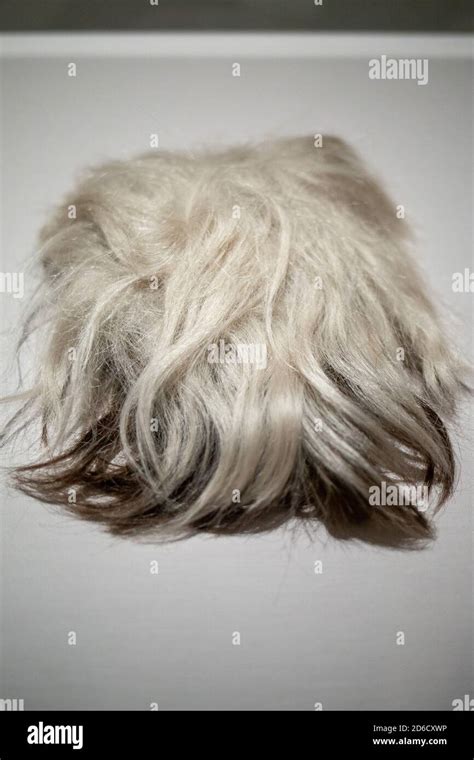A Revolutionary Fashion Statement
From the hallowed halls of the Factory to the bustling streets of New York City, Andy Warhol’s wig became an iconic symbol of the Pop Art movement and the counterculture of the 1960s. As daring as it was distinctive, the wig shattered societal norms and epitomized an era of artistic rebellion.

The Genesis of the Wig
The origins of Warhol’s wig are shrouded in mystery. Some believe it was a gift from the artist’s close friend and collaborator, Billy Name. Others claim that Warhol simply found it at a thrift store. Regardless of its provenance, the wig quickly became an essential part of Warhol’s persona, a visual manifestation of his artistic and personal philosophies.
Pop Art’s Embrace
Warhol’s wig embodied the tenets of Pop Art. It celebrated the mundane and ordinary, blurring the lines between high and low culture. By donning the wig, Warhol transformed himself into an anonymous figure, a living artwork that challenged traditional notions of beauty and authenticity.
Counterculture Symbolism
Beyond its artistic significance, Warhol’s wig became a symbol of the counterculture movement. It represented a rejection of societal conformity and a celebration of individuality. The wig empowered those who felt marginalized and allowed them to express themselves freely.
Influence on Fashion and Culture
The impact of Warhol’s wig extended far beyond the art world. It became a fashion icon, influencing designers and inspiring a broad range of hairstyles. The wig’s popularity also spawned countless imitations and tributes, solidifying its status as a cultural phenomenon.
The Evolution of the Wig
Over the years, Warhol’s wig underwent several transformations. Initially, it was a simple, short-cropped platinum blonde. As Warhol’s fame grew, so too did the wig’s complexity. He experimented with different colors, textures, and styles, including long, flowing locks and even a signature silver wig.
Significance in Warhol’s Work
Warhol’s wig was not merely an accessory; it played a pivotal role in his artistic practice. It both reflected and influenced his iconic silkscreens, which often featured portraits of celebrities and consumer products. The wig’s anonymity allowed Warhol to distance himself from his subjects and create a more detached observer perspective.
Table 1: Key Characteristics of Andy Warhol’s Wig
| Feature | Description |
|---|---|
| Color | Platinum blonde, silver, or other experimental shades |
| Texture | Various, including straight, curly, or tousled |
| Style | Short-cropped, long and flowing, or other variations |
| Material | Synthetic or natural hair |
| Significance | Emblematic of Pop Art and counterculture, challenged societal norms |
Table 2: Impact of Warhol’s Wig on Fashion and Culture
| Fashion Influence | Cultural Impact |
|---|---|
| Inspired new hairstyles and trends | Became a symbol of artistic rebellion and youth culture |
| Influenced designers and stylists | Promoted individuality and self-expression |
| Spawned countless imitations and tributes | Cemented its status as a cultural icon |
Tactics for Creating a Warhol-Inspired Look
1. Embrace the Platinum Blonde: Warhol’s iconic wig is synonymous with platinum blonde. Opt for a similar shade to channel his signature look.
2. Experiment with Texture: Play around with different textures, from sleek and straight to tousled and voluminous.
3. Add Edgy Accessories: Accessorize with studs, chains, or other unconventional embellishments to add a touch of Warhol’s counterculture aesthetic.
4. Showcase Your Individuality: Don’t be afraid to create a wig that is uniquely you. The key is to express yourself and channel Warhol’s spirit of rebellion.
Table 3: Quotes Regarding Warhol’s Wig
| Author | Quote |
|---|---|
| Billy Name, Warhol’s friend and collaborator | “The wig was a way for Andy to become anonymous and to create a persona.” |
| Lou Reed, musician and Warhol associate | “Warhol’s wig was like a shield. It allowed him to observe the world without being noticed.” |
| Grace Jones, singer and model | “Warhol’s wig was a symbol of freedom and artistic expression. It inspired me to embrace my own individuality.” |
Table 4: Related Keywords and Concepts
| Keyword | Description |
|---|---|
| Pop Art | An artistic movement that celebrated the mundane and ordinary |
| Counterculture | A cultural movement that rejected societal norms and values |
| Artistic Rebellion | A challenge to traditional artistic practices and conventions |
| Cultural Icon | A symbol or figure that represents a particular era or cultural movement |
